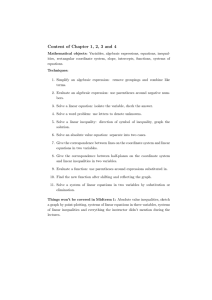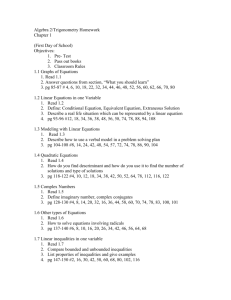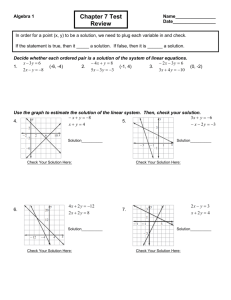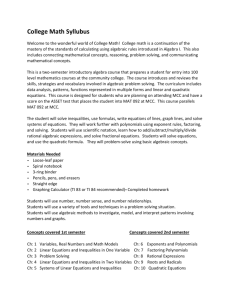Vocab
advertisement
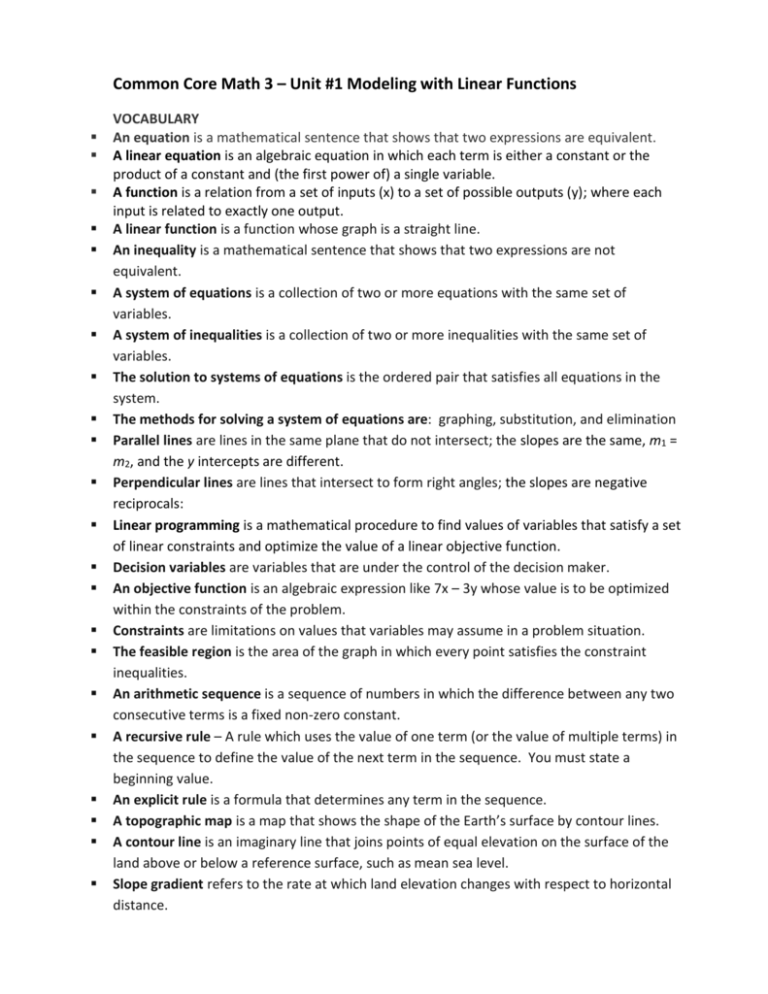
Common Core Math 3 – Unit #1 Modeling with Linear Functions VOCABULARY An equation is a mathematical sentence that shows that two expressions are equivalent. A linear equation is an algebraic equation in which each term is either a constant or the product of a constant and (the first power of) a single variable. A function is a relation from a set of inputs (x) to a set of possible outputs (y); where each input is related to exactly one output. A linear function is a function whose graph is a straight line. An inequality is a mathematical sentence that shows that two expressions are not equivalent. A system of equations is a collection of two or more equations with the same set of variables. A system of inequalities is a collection of two or more inequalities with the same set of variables. The solution to systems of equations is the ordered pair that satisfies all equations in the system. The methods for solving a system of equations are: graphing, substitution, and elimination Parallel lines are lines in the same plane that do not intersect; the slopes are the same, m1 = m2, and the y intercepts are different. Perpendicular lines are lines that intersect to form right angles; the slopes are negative reciprocals: Linear programming is a mathematical procedure to find values of variables that satisfy a set of linear constraints and optimize the value of a linear objective function. Decision variables are variables that are under the control of the decision maker. An objective function is an algebraic expression like 7x – 3y whose value is to be optimized within the constraints of the problem. Constraints are limitations on values that variables may assume in a problem situation. The feasible region is the area of the graph in which every point satisfies the constraint inequalities. An arithmetic sequence is a sequence of numbers in which the difference between any two consecutive terms is a fixed non-zero constant. A recursive rule – A rule which uses the value of one term (or the value of multiple terms) in the sequence to define the value of the next term in the sequence. You must state a beginning value. An explicit rule is a formula that determines any term in the sequence. A topographic map is a map that shows the shape of the Earth’s surface by contour lines. A contour line is an imaginary line that joins points of equal elevation on the surface of the land above or below a reference surface, such as mean sea level. Slope gradient refers to the rate at which land elevation changes with respect to horizontal distance.

